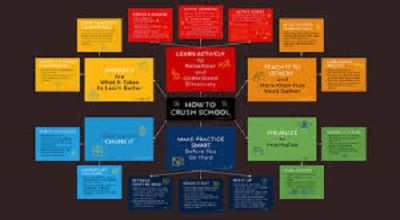Top Strategies To Help Students Retain
Top Strategies To Help Students Retain: Improving student retention of information involves employing a variety of strategies to enhance understanding, engagement, and memory. Here are some effective strategies to help students retain what you teach them:
Active Learning:
- Encourage participation through class discussions, group activities, and hands-on projects.
- Use interactive tools, such as clickers, quizzes, and polls, to involve students in the learning process.
Visualization Techniques:
- Utilize visual aids, diagrams, charts, and graphs to represent complex concepts.
- Encourage students to create mind maps or concept maps to organize information.
Relate to Real-life Examples:
- Connect theoretical concepts to real-life examples, making the content more relatable and memorable.
- Share case studies or stories that demonstrate the practical application of the material.
Repetition and Review:
- Incorporate regular reviews of previously covered material to reinforce learning.
- Encourage students to review and summarize content periodically to enhance long-term retention.
Utilize Multiple Learning Modalities:
- Cater to different learning styles by incorporating a mix of visual, auditory, and kinesthetic elements in your teaching methods.
- Provide resources in various formats, such as videos, articles, and interactive simulations.
Provide Clear Learning Objectives:
- Clearly articulate learning objectives at the beginning of each lesson to help students understand the purpose and focus of the material.
- Reinforce the connection between these objectives and the content throughout the session.
Encourage Self-Reflection:
- Incorporate reflective activities where students can think about and apply what they’ve learned.
- Assign journals, reflection papers, or discussions that prompt students to consider the significance of the material.
Incorporate Technology:
- Integrate educational technology tools and platforms that support interactive learning and engagement.
- Use online forums, virtual labs, or collaborative platforms for discussions and group projects.
Provide Timely Feedback:
- Offer constructive feedback promptly to help students understand their strengths and areas for improvement.
- Feedback should be specific, actionable, and tied to learning objectives.
Encourage Peer Teaching:
- Assign collaborative projects or activities that require students to teach concepts to each other.
- Peer teaching reinforces understanding and allows students to see the material from different perspectives.
Create a Positive Learning Environment:
- Foster a supportive and inclusive classroom atmosphere where students feel comfortable asking questions and sharing their thoughts.
- Promote a growth mindset to encourage resilience and a willingness to learn from mistakes.
Implement Mnemonic Devices:
- Teach students memory aids or mnemonic devices to help them remember specific information or sequences.
Summary
In summary, the effectiveness of these strategies may vary based on the subject matter, grade level, and individual student preferences. Flexibility and adaptability in your teaching approach can contribute to improved retention among a diverse group of students.
